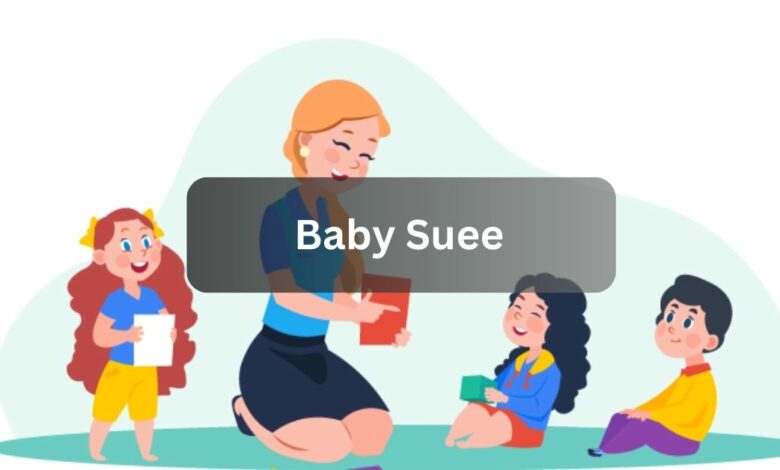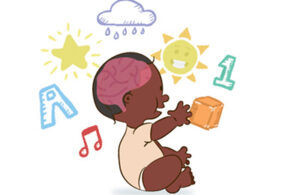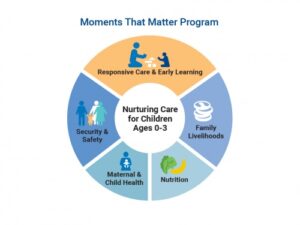Baby Suee: The Ultimate Guide to Understanding This Phenomenon!

In the world of parenting and child development, the term “Baby Suee” has been gaining significant attention in recent years. Parents, caregivers, and educators are increasingly curious about this concept and its implications for early childhood development.
In this comprehensive guide, we will delve deep into the world of Baby Suee, exploring its origins, significance, and practical applications.
Origins of Baby Suee
Baby Suee is a term coined to describe a unique approach to nurturing and engaging with infants and young children.

It emphasizes the importance of responsive and sensitive caregiving, focusing on building strong emotional bonds between caregivers and children.
The concept draws inspiration from attachment theory and emphasizes the role of secure attachments in promoting healthy child development.
The Significance of Baby Suee
At the core of Baby Suee is the belief that responsive caregiving and emotional attunement are essential for promoting optimal development in young children.
By meeting a child’s emotional needs promptly and consistently, caregivers can help foster a sense of security, trust, and self-regulation.
This, in turn, lays the foundation for healthy social and emotional development, cognitive growth, and overall well-being.
Practical Applications of Baby Suee
Implementing Baby Suee principles in caregiving practices involves being attuned to a child’s cues, responding promptly to their needs, and providing a nurturing and supportive environment.
This may include practices such as babywearing, responsive feeding, co-sleeping, and engaging in interactive play.
By prioritizing emotional connection and responsiveness, caregivers can create a secure and nurturing environment that supports a child’s overall development.
Benefits of Baby Suee
Research has shown that children who experience responsive and sensitive caregiving tend to exhibit greater emotional resilience, social competence, and cognitive abilities.

By fostering secure attachments and emotional connections, Baby Suee can lay the groundwork for healthy relationships, effective communication, and positive self-esteem in children.
Additionally, children who experience Baby Suee are more likely to develop strong emotional regulation skills and coping mechanisms.
Challenges and Misconceptions
While the concept of Baby Suee has gained popularity in parenting circles, it is not without its challenges and misconceptions.
Some critics argue that overly focusing on responsiveness may lead to overindulgence or spoiling of children.
However, proponents of Baby Suee emphasize that setting appropriate boundaries and limits is an integral part of the approach, promoting a balance between nurturing care and structure.
Implementing Baby Suee in Everyday Life
Incorporating Baby Suee principles into daily caregiving routines can be a rewarding experience for both caregivers and children.

Simple practices such as maintaining eye contact, and creating a safe and stimulating environment can go a long way in fostering secure attachments and promoting healthy development in children.
Supporting Baby Suee in Early Childhood Settings
Educators and childcare providers play a crucial role in supporting Baby Suee practices in early childhood settings.

By creating nurturing and responsive environments, and promoting secure attachments, professionals can contribute to the overall well-being and development of young learners.
Frequently Asked Questions:
1. What are the key principles of Baby Suee?
Baby Suee emphasizes responsive caregiving, emotional attunement, and building secure attachments between caregivers and children. By prioritizing emotional connection and sensitivity, Baby Suee aims to promote healthy child development.
2. How does Baby Suee differ from traditional parenting approaches?
Unlike traditional parenting approaches that may focus more on discipline and obedience, Baby Suee places a strong emphasis on emotional connection, responsiveness, and building secure attachments. It highlights the importance of meeting a child’s emotional needs promptly and consistently.
3. Can Baby Suee be applied to older children as well?
While Baby Suee is often associated with infants and young children, its principles can be applied to older children as well. The focus on emotional connection, responsiveness, and building secure attachments remains relevant across different stages of childhood.
4. What are some practical ways to incorporate Baby Suee into daily routines?
Practical ways to incorporate Baby Suee into daily routines include maintaining eye contact, responding promptly to a child’s cues, engaging in interactive play, and creating a nurturing and supportive environment.
5. How can educators support Baby Suee in early childhood settings?
Educators can support Baby Suee in early childhood settings by creating nurturing and responsive environments, fostering positive relationships with children, and promoting secure attachments.
6. What are the long-term benefits of practicing Baby Suee?
related terms: baby_suee


